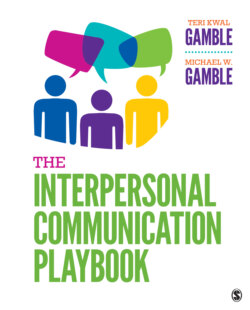Читать книгу The Interpersonal Communication Playbook - Teri Kwal Gamble - Страница 145
На сайте Литреса книга снята с продажи.
Become a Perception Checker
ОглавлениеTo avoid treating interpretations as if they were indisputable facts, develop the skill of perception checking: Observe the behavior of another, describe and interpret what his or her behavior means to you, and put your interpretation into words in the effort to determine if your perception is correct.
For example, imagine your friend Leila walks into the classroom and flings her books down on the desk next to yours. As she takes her seat, you notice that her eyes are narrowed, and her face is in a scowl. You might be inclined to ask, “Why are you angry at me?” But a perception checker would quietly say to her, “Leila, I get the feeling that you’re angry about something. Am I right? Can I do anything to help?”
By making an initial statement followed by questions that assume nothing you aim to explore Leila’s thoughts and feelings, not to prove that your interpretation of what you have observed is right. Leila might not even be angry. If you ask, she might state, “I’m not angry. I’m upset with myself for not getting the paper done on time.” By seeking verification of the impression you received from Leila’s nonverbal behavior and giving her the opportunity to share her thoughts and feelings, you take some of the guesswork out of perception.
Keep in mind that perception checking works best with people from low-context cultures. Typically, it involves straight talk and direct statements of observation. People from high-context cultures might become embarrassed if they are asked so directly about their feelings and the meanings of their actions.
